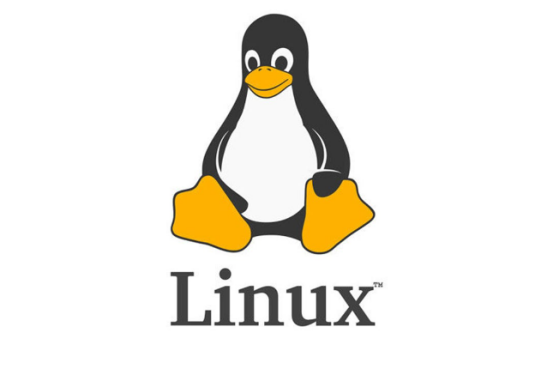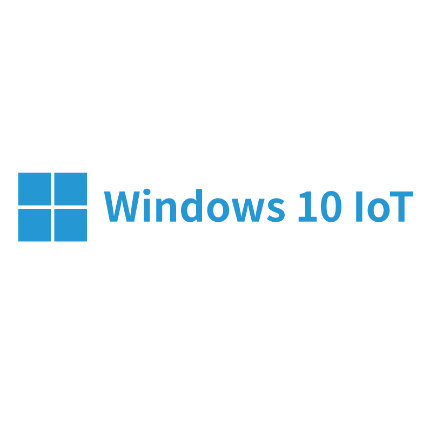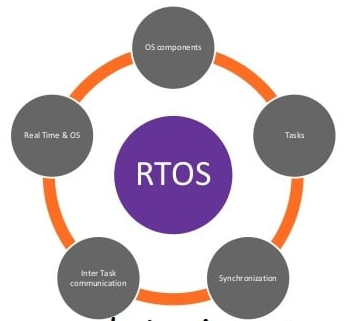Industrial embedded computers are essential for applications in manufacturing, transportation, robotics, and more. At the core of any embedded system lies its operating system (OS), which serves as the intermediary between the hardware and software, enabling tasks like real-time monitoring, data processing, and automation. Selecting the right OS is a key decision, with options like Linux, Windows IoT, and Real-Time Operating Systems (RTOS) each offering unique advantages.
In this guide, we’ll break down the primary features and benefits of each OS and provide insights to help you choose the most suitable one for your industrial embedded system.
The operating system in an embedded computer plays a crucial role by:
· Managing hardware resources
· Handling communication with connected devices
· Enabling real-time data processing
· Securing and monitoring system performance
Industrial embedded computers operate under unique constraints, often needing fast, reliable, and sometimes real-time processing in harsh environments. The choice of OS impacts the system’s stability, efficiency, and overall operational capability.
When choosing an OS, consider:
· Real-time performance: Is quick response time essential for your tasks?
· Hardware compatibility: Ensure the OS supports your specific embedded hardware.
· Ease of customization: Some operating systems offer extensive configurability.
· Security and stability: Industrial systems require robust protection from cyber threats.
· Support and updates: Look for OS options with reliable long-term support.
Let’s delve into the pros, cons, and ideal use cases for three popular OS options: Linux, Windows IoT, and RTOS.
Linux is a widely used open-source OS known for its flexibility and extensive community support.

· Cost-Effective: Being open-source, Linux is free and can be customized to specific application needs.
· High Customizability: It can be tailored to a wide variety of hardware configurations.
· Community Support and Resources: A large developer community ensures continuous improvement, resources, and troubleshooting.
· Security Features: Strong support for security patches and robust access controls make Linux a secure choice.
· Learning Curve: Requires knowledge of command-line interfaces and system customization.
· Potential Resource Intensity: Some Linux distributions may demand more memory and processing power, which could impact certain industrial applications.
Linux suits industries requiring flexible and powerful control over embedded systems, such as manufacturing automation, telecommunications, and transportation systems.

Windows IoT (Internet of Things) is Microsoft’s specialized version of Windows designed for embedded and IoT applications. It comes in multiple versions, such as Windows IoT Core and Windows IoT Enterprise, each designed for different levels of functionality.
· User-Friendly Interface: Offers a familiar Windows environment, making it easier for teams to adapt.
· Powerful Development Tools: Integrates with Microsoft’s extensive development ecosystem, including Visual Studio, Azure IoT, and .NET.
· Enterprise-Level Security: Equipped with advanced security features, including secure boot, BitLocker encryption, and regular security updates.
· Strong Hardware Compatibility: Works well with hardware components commonly found in industrial settings.
· Licensing Costs: Unlike Linux, Windows IoT involves licensing fees.
· Less Customization: Has more limitations on kernel-level customization compared to Linux.
Windows IoT is ideal for industrial applications requiring integration with existing Windows-based IT infrastructure, such as medical devices, retail point-of-sale (POS) systems, and kiosks.

RTOS is an operating system specifically designed for real-time processing, where deterministic response times are critical.
· Predictable Response Times: Ensures timely execution of tasks, critical for safety and performance.
· Lightweight and Efficient: RTOS is optimized for minimal resource consumption, making it suitable for low-power devices.
· Enhanced Reliability: RTOS often includes safety certifications, essential for industries with stringent safety requirements.
· Limited Functionality: Typically designed for specific tasks, offering fewer general-purpose functions than Linux or Windows IoT.
· Complex Development Environment: Programming for RTOS can be more complex and may require specialized development skills.
RTOS is best for applications requiring real-time control and quick response, such as robotics, automotive systems, and critical healthcare devices.
|
Feature |
Linux |
Windows IoT |
RTOS |
|
Cost |
Free, open-source |
Licensing required |
Variable, often licensed |
|
Customization |
High |
Moderate |
Limited |
|
Real-Time Capability |
Some distributions support it |
Limited |
Built-in, optimized for real-time |
|
Security |
Strong, open-source patches |
Enterprise-level, robust |
Generally secure for real-time |
|
Developer Support |
Strong community |
Microsoft ecosystem |
Limited, often proprietary |
To summarize, the choice of OS for your industrial embedded computer depends on your application’s requirements:
· Choose Linux if you need flexibility, cost-effectiveness, and robust security.
· Opt for Windows IoT if you want seamless integration with Windows systems and powerful development tools.
· Consider RTOS when your application demands real-time processing and highly predictable response times.
If you’re looking for high-quality industrial embedded computers that are built to last, BVS offers a range of robust and reliable options tailored for industrial and IoT applications. With a commitment to innovation and quality, BVS provides hardware solutions that meet the demands of today’s industrial environments. From ruggedized computers for harsh conditions to fanless and power-efficient models for optimal performance, BVS has options to support various OS platforms, including Linux, Windows IoT, and RTOS.
For more information on BVS products and solutions, visit BVS’s official website.
Read more about industrial embedded computer:
5 Signs Your Business Needs to Upgrade to an Industrial Embedded Computer
If your current system struggles with slow processing times, it's likely costing you more than you realize. In industries where speed is crucial, slow systems can lead to delays, inefficiencies, and even downtime.
Industrial Embedded Computers for Real-Time Data Processing
Industrial embedded computers are specialized computing systems designed to operate in harsh environments and perform specific tasks within industrial settings.

Click to confirm
Cancel